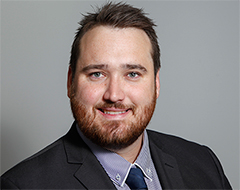 On Tuesday, June 22 the NSW State Government will hand down a budget that is expected to include the biggest reforms to stamp duty in decades.
On Tuesday, June 22 the NSW State Government will hand down a budget that is expected to include the biggest reforms to stamp duty in decades.
At the time this article is being drafted details have not been released with respect to the policy, however it has been reported that the reforms will be in the same form as prefaced by Dominic Perrottet in 2021 when he flagged stamp duty reform as a priority.
It is expected, at least in the initial phases, that property buyers will be able to choose whether or not to pay an upfront stamp duty amount or instead pay a much lower annual fee each year in perpetuity.
For example, stamp duty on a property with a value of $1,000,000 is circa $40,207, which is payable in addition to the purchase price.
It is expected that under the Liberal Party’s reforms, buyers will be able to pay this upfront or pay an annual fee in its place. It is not yet known what the amount of that annual fee will be.
In addition, it is not known to which properties the reforms will apply in the early stages of the scheme, but it has been reported that there will be some form of price or value cap that excludes people who purchase properties over a certain threshold from being able to take part in the scheme. Those people will still need to pay their stamp duty upfront.
There are many arguments in support of such a reform.
Firstly, it arguably removes a barrier to many people to getting into the market.
First home buyers already need to save a 10 per cent deposit, 20 per cent if they wish to avoid loan mortgage insurance in most cases, and the impost of stamp duty pushes those required savings even more.
If people were able to pay their stamp duty, which is just another word for a tax, over time they would arguably have more money in their pocket today to purchase a property and be able to get into the market sooner.
It is expected that once a property has been opted-in to the yearly payment scheme, that property will be subject to the scheme in perpetuity.
This means that should the property be subsequently sold the incoming purchaser will not be able to elect again whether or not to pay upfront, they will have to adopt the pay as you go approach.
There has been some criticism of the scheme because essentially it is not the removal of a tax, rather it is a deferral that in the long term will result in the Government actually collecting more revenue over time.
However if the yearly payment is somewhere between $1,000 and $1,500 per year, then depending on the purchase price of your property it would take somewhere between 30 to 50 years before you end up paying more than what you would have had you been required to pay your stamp duty upfront.
This means more money in your pocket today, and given the substantial amount of time it would take the Government to recoup what it otherwise would have received upfront it is difficult to foresee a scenario where tax payers end up substantially behind. Of course, this is all dependent on the amount of yearly tax that is payable.
As they say; a bird in the hand is worth two in the bush.

Daniel McKinnon
Since graduating with two degrees in Law and Commerce from the University of Wollongong, Daniel’s spent over ten years solving a wide range of legal problems for the people of Western Sydney.
